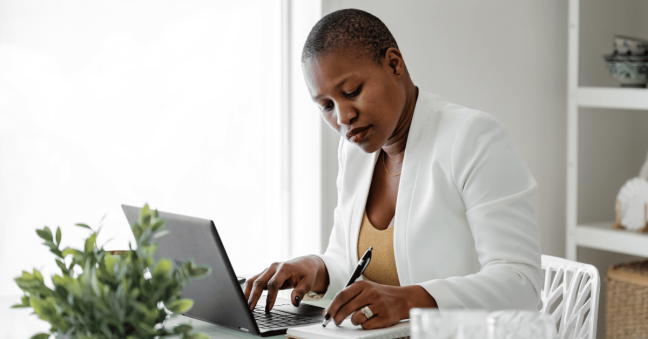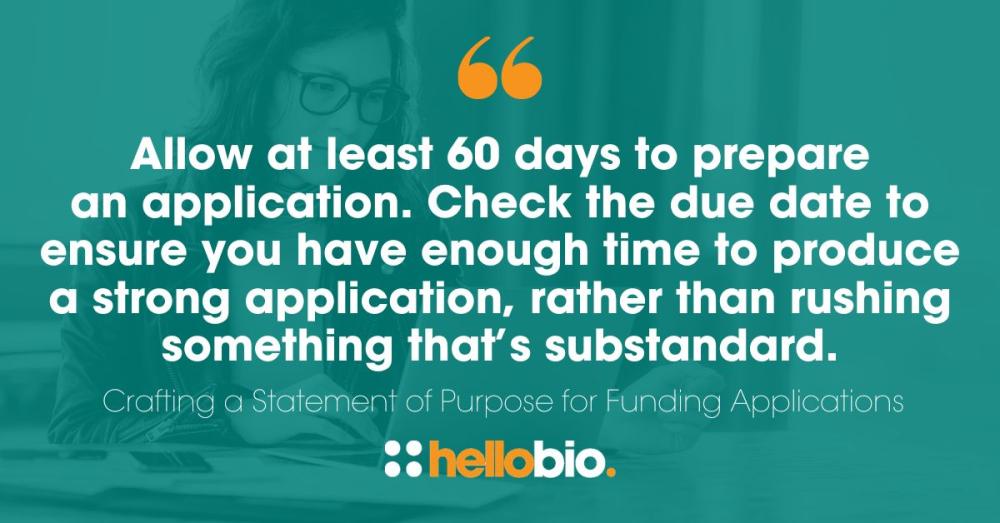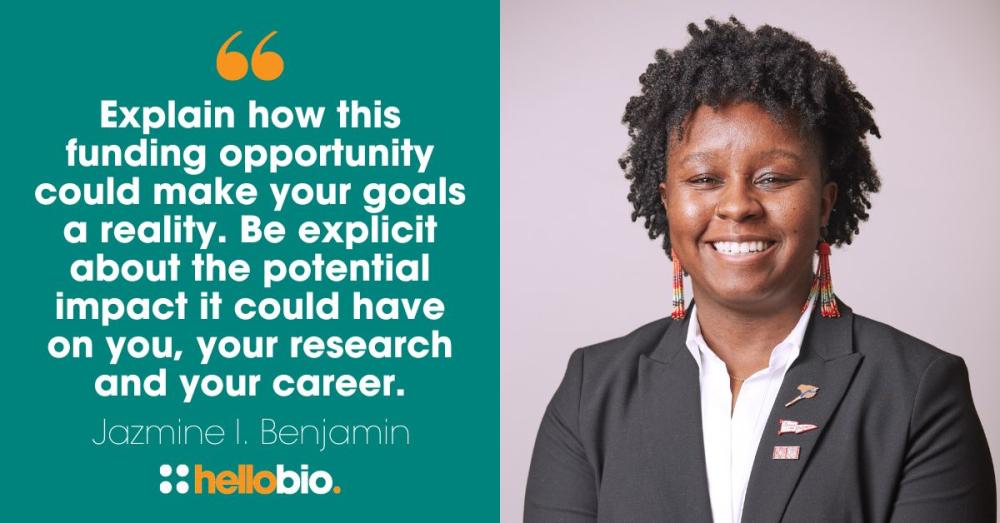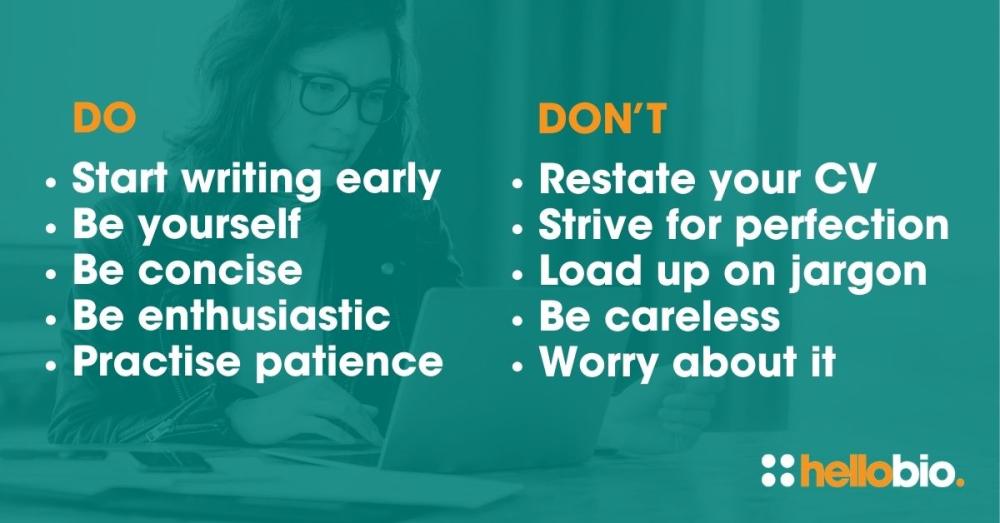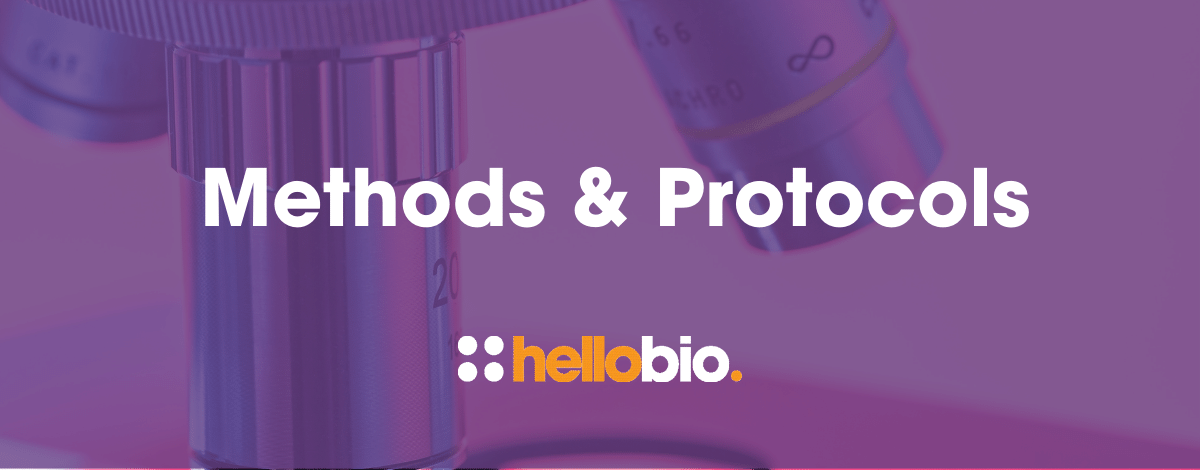Crafting a Statement of Purpose for Funding Applications
Most life scientists will know that applications for STEM research funding require a huge amount of preparation, coordination and commitment. A lot goes into a complete application packet, including letters of recommendation, supporting documents, an up-to-date CV and hours of additional writing by the applicant.
A critical part of any funding application is the statement of purpose, and its importance can often be overlooked. Writing a strong personal statement can be key to getting your application through the next round of review and can put you one step ahead of the hundreds of other applicants hoping to secure the same funding.
So what goes into a good statement of purpose, and where should you start when sitting down to write one? In this fantastic article, Dr Jazmine I. Benjamin of the Vanderbilt University Medical Center, USA, explains in detail how to craft a strong statement of purpose and why understanding your audience, selling your story, and choosing your words wisely are critical for funding success.
Why is a statement of purpose important?
The statement of purpose sets the stage for the rest of your funding application and is one of the first things the reviewer will look at. It will give them an immediate idea of who you are, what's important to you, and how well you can communicate. It’s your opportunity to make an excellent first impression, and doing this effectively can play a big part in the outcome of your funding application.
A statement of purpose allows you to showcase your strengths and to put the things that are most important to you on display, front and centre of your application. It also allows you to explain the finer details of your experience, e.g. any gaps in your work history, changes of study focus, etc. It can also give the reviewers an insight into your personality and how you think prior to any formal interviews that may follow in a multifactorial application process.
Understanding your audience
One of the most important things to consider when writing a statement of purpose is who you are writing for. Who is your audience? What factors will be necessary to them? What are they looking for in an applicant?
Do your research
The first thing to do is research the funding organisations that are available to you based on your field of research. Use all resources available to find out as much as you can:
- Online search engines - One of the easiest ways to find funding opportunities in your field is through an online search engine. Take your time to sift through the results, which are likely to include the bigger funding bodies, government-sponsored organisations, and smaller, private funding groups. Find out what you can about their background, areas of particular interest, principles, and ethos.
- Office of Research - Many research-intensive universities will have an Office of Research which will be geared toward helping students find out more about funding opportunities. Not only will they be happy to help you source funding, but they will usually offer support with shaping and preparing your application packet.
- Mentors - Reach out to your mentors or advisors who should have a good insight into the right funding opportunities for you, based on previous student applications and reviewer feedback.
- Other students - If you are part of a cohort of students who are all interested in the same kind of research, don’t be afraid to ask questions about any funding they may have already applied for or any advice from senior students who’ve been through the process before. Which organisations have they applied to? Did they have a good or bad experience? Would they recommend applying to any particular organisations?
Go through the fine details
Once you’ve found some opportunities of interest, take time to review the finer details of the requirements so that you don’t waste your time applying for something that might later turn out to be a bad match for you. Be sure to check the following:
- Relevance to your work - Before beginning any application be 100% sure that they are looking for someone interested in your field of study, whether that be broad or very specific.
- Application criteria - Pay attention to the criteria for applicants and be sure you are qualified to apply for that particular source of funding, eg. don’t apply for a postdoctoral fellowship if you’re a Ph.D. student!
- Due dates - A lot of time and work goes into completing a full application packet, and you should allow yourself at least 60 days to gather and prepare all the relevant information. Check the due date to ensure you have enough time to produce a strong application rather than rushing to put something substandard together at short notice.
- Frequency of application cycles - If you don’t feel you have time to put together a strong application, check how often that particular organisation accepts applications throughout the year. It might be that there are multiple opportunities to apply, so don’t be afraid to wait for the next cycle to give yourself a better shot at success.
- Supplemental information - Find out what other information you’ll be required to submit along with your application, e.g. letters of recommendation from senior colleagues, supporting documents from your PI, etc. Check what’s needed and be confident that you’ll be able to get hold of these things with time to spare.
Tailor your statement to the criteria
Before you start writing your statement of purpose, think about how you can tailor it to match the criteria of the application:
- Length - Have they specified the length of your statement? Should it be one page or two pages? Do they state a word limit? Often you will be encouraged to keep your statement on the shorter side as the reviewer or committee may have hundreds, if not thousands to read through.
- Formatting - Check if they are asking for a specific format or layout. Some will ask that your statement be written in a particular font with precise margins. Pay attention to these details because getting these wrong can be a quick and easy way to get your application thrown out!
- Focal points - Consider what needs to be the focus of your application. If it’s a research-specific funding opportunity then you’ll need to detail your research experience, whereas a professional development opportunity will need a clear summary of your previous training and educational background.
Address the basic questions
Be prepared to address some of the most basic questions in your statement. They may seem obvious to you, but be sure to make these things very clear from the outset:
WHAT - What kind of work are you doing? Are you doing your PhD in neuroscience or pharmacology? What is the specific focus of your research, and what are your long-term goals?
WHY - Why does your research matter to you? Why are you passionate about what you do, and why should the committee sit up and take notice? For many scientists, we're ultimately trying to cure a disease or make life easier for a particular group of people, so if that’s how you feel, say so!
HOW - How does your work fit with this funding opportunity? How do you, as a scientist, fit with their criteria? How will a successful funding application impact you and your career?
Selling your story
Your statement of purpose should have a compelling narrative, and it’s essential to TELL your story and SELL it too. You're asking for money, so consider your funding application a business pitch. Sell yourself to the best of your ability, and make the reviewers believe that you’ve got something they need and that this is the next best thing that will happen in your given field.
Strength, clarity and definition
You must aim for a strong opening statement that grabs their attention and makes your application stand out. Be sure to define any terms specific to your field, e.g. in immunology there are a vast number of abbreviations for longer terms that a reviewer might not be familiar with. Using them without an explanation can become overwhelming for the reader, and it's a surefire way to get your application thrown out. Have a clear idea of what the ultimate payoff will be from your research and why this matters. In science research, not everything is about finding a cure or an ultimate ‘fix’ for a problem. Sometimes, we're creating something that's going to lead to a pharmaceutical therapy or that will improve the quality of life for someone with a terminal illness. Have a clear idea of what your research is working towards long-term and be very specific about that. Always remember why this organisation should invest in you, and why it would benefit them to do so.
The key components of a personal statement
If you've written any kind of report before, then the layout of a personal statement will probably be very familiar to you. An effective statement of purpose should follow a standard layout of introduction, body and conclusion:
Introduction
- Strong opening statement - Your introduction should begin with a strong line that hooks the reviewers early. Remember that this could be the 100th application they’ve looked at today, so do what you can to make yours stand out from the outset.
- Avoid clichés - There are several familiar lines, phrases or tropes seen time and time again by reviewers that you should try to avoid:
- Since I was a child, I’ve been interested in…’
- Fire metaphors, e.g. ‘a burning desire’, ‘this sparked my interest in science…’
- Direct interactions, e.g. ‘I’m applying for this because…’ - a direct statement with absolutely no level of creativity at all
- Opening quotes by other people or famous scientists - remember this is YOUR statement!
- Tell a vivid story - The only time clichés should be encouraged is if they are part of a vivid story that adds depth, colour and character to your writing. For example, instead of ‘Since I was a child, I’ve been interested in science…’ try something like ‘Since kindergarten, I’ve always enjoyed the thrill of discovery’ - this brings more life to your story and conveys your passion.
- Circular narrative - This is an underused technique in personal statements which can add extra strength and power to your story. Try introducing a scenario at the beginning of your statement that you can loop back around to and connect with at the end of your conclusion. For example, you’re applying for an opportunity in botany, so you begin your statement with: ‘I've always enjoyed the thrill of discovery. As a kindergartener, I remember spending hours with my grandparents, looking at and learning about the different types of trees in their backyard.’ When you reach the conclusion of your statement, you could complete the circular narrative with a line such as: ‘With your funding, I hope to use my research to ensure there are plenty of trees for future generations of children to look at with their grandparents.’
- Write your introduction last - Before diving into writing your introduction, consider working on the body of your content first because this may automatically give you ideas for a natural opening to your narrative.
Body
- Showcase your relevant experience - Whether this is your research, educational background, accomplishments, or something else, it’s essential to give plenty of evidence supporting your fitness for this specific opportunity. What will this opportunity offer you? Will it allow you to explore a research question that's been on your mind for years? Will it allow you to participate in a professional development opportunity not offered at your university?
- Be specific and focused - Explain how and why you're qualified to study this subject. Is your lab the only one in the world that uses a technique? Were you leading a study group that made a particular discovery, and you are the only person who can continue this work? You need to tell them why they need to fund YOU and why no one else can do this.
Conclusion
- Think ahead - Include any future goals for yourself or your research. If it's a professional development opportunity, express how it will help you to have a successful career in your given field. If it's for your research, explain how you plan on taking this research with you to your next career level, whether that's a doctoral degree or postdoc. Even if you're not going to do those things immediately, it shows that you're thinking ahead about the potential of this investment.
- Express the reality - Explain how this opportunity will make your goals a reality. Will it give you time and money to chase that research question? Will it allow you that professional development opportunity? Be explicit about the reality of this potential funding and the impact it could have.
- Circle back - Reinforce the impact of the opportunity and loop back to that circular narrative. Tie everything back to your introduction where possible.
Addressing common challenges
All writing projects have challenges, and putting together a good piece of writing is never plain sailing. Writer’s block is a common problem that can quickly become procrastination. Here are some of my tips that will help you past these sorts of problems and give you the best chance of producing a great piece of writing:
Start early and write often
My most important piece of writing advice is to start early and write often. If I have an application due in three months, I will start writing today, and I will start with maybe just five minutes. Maybe I just open a document, write a title, and save it. It might not be much, but it’s a start, and psychologically that can be significant. Then tomorrow, perhaps I'll write for 30 minutes; the next day, maybe for an hour, etc. By the time I get through a month, I’ll have a good working draft of my statement that I feel comfortable with.
Use a ‘trash’ or ‘dump’ file
Your draft won’t be perfect at this stage, but it will be ‘done,’ putting you in a great position to start getting feedback and fine-tuning and polishing it. However, be sure to save every draft before you make changes. It’s easy to begin editing, delete sentences, rewrite entire paragraphs, and later realize you wish you’d saved those words somewhere. A handy solution I use often is a ‘trash’ or ‘dump’ file. This consists of a giant document where I’ll copy and paste deleted paragraphs, ideas that didn’t make the cut, specific citations, or random musings for future projects. They may not be helpful to you now or make much sense at this point, but in a few months, they might be just what you’re looking for to complete a piece of work.
Write in a stream-of-consciousness
I have a very strong internal dialogue, which I appreciate not everybody has, but I find writing in a stream-of-consciousness productive. I will write as and when ideas come to my mind, leaving notes to come back to later if there are gaps for quotes or citations. It’s like having a conversation with myself, and it helps to get the words flowing, even if they don’t make exact sense the first time around.
Find a writing group
Writing groups are helpful if you’re motivated to work more productively in front of others, for example, in a coffee shop or a library. Find a virtual or an in-person writing group, have some accountability for yourself, and help yourself be accountable for others. Even just being on a Zoom call with another person, not saying a word, but both working away on individual projects and checking in occasionally can be enough to boost productivity.
Walk away… but come back!
I find that when I'm writing, I may write for an hour, and then I'll take a walk for an hour, and I’ll often find that fresh ideas will come to mind because I'm not actively forcing my brain to think about anything in particular. Take time away from your writing. Write for 10 minutes, then take a 20-minute walk or read a book. Do something else where you're not actively thinking about your writing topic, and you'll be surprised at how quickly new ideas will come to you.
Choose your words wisely
Once you’ve found your way past the writer’s block and the words are flowing, there are a few other things to keep in mind when choosing the type of words and language to use in your statement of purpose:
- Balance confidence with humility - When we apply for funding, we want to talk about our strengths, the awards we've received, the papers we've published, and all of our excellent academic achievements. But try to insert some humility into your writing. The reviewers won’t warm to someone who comes across as a braggart.
- Don’t compare yourself to others - Try not to compare yourself or your research to others. Being proud of your achievements is okay, but comparing them to others can also be a little haughty.
- Celebrate others - Acknowledging the work of others when mentioning team projects or co-author papers is essential. You are part of a lab group; you're not an island, and it shows that you are humble and a good team player.
- Use the word ‘because’ - There is a 1978 study by Ellen Langer that found that the use of the word 'because' when explaining something makes others respond more positively. It can make a more formal application process feel a little more personable, so don't be afraid to use 'because' when linking your thoughts together.
Editing and refining your writing
Once you feel your statement of purpose is in pretty good shape, it’s time to go through editing and refining your work to add some polish and sparkle to your words.
Seek feedback
Ask for feedback early, but be very selective about who you ask. Ask someone with little or no knowledge of your field to look at it and ensure they can understand it. Be very clear about what feedback you need, e.g. you might need help to cut out 100 words or advice on the tone of your introduction. Remember not to take any negative feedback personally. If you're asking for critique, people will genuinely want to help you have the best product for your application. So if you get it back and it's covered in suggested edits, take a moment to breathe, and then go and address all of those points - your ego might be a little bruised, but your application will be so much better for it.
Polishing language and structure
Read your work aloud. You'll pick up on so much of the flow and narrative when reading aloud. Be sure to double-check your word and character count, especially if there are specific requirements for these. I also recommend using proofreading software such as Grammarly, Hemingway or ProWriting Aid. You can copy and paste your entire document, and it will give you all kinds of grammatical and stylistic tips that you can choose to either ignore or take on board.
Use Chat GPT ethically
You shouldn’t use Chat GPT to write your statement for you. But it’s perfectly okay to use it to give you an outline and an idea of a good structure for your piece. It's a tool that can be extremely helpful when used ethically, not to write your statement for you but to help you with the creative process.
And finally…
Remember that rejection is a huge part of life as a scientist, and if your application is unsuccessful this time, you'll have other opportunities to apply again. Each time you apply, you’ll learn something new and get valuable feedback from people who have read your work and looked at your entire packet. This will all help you improve things next time around. Good luck!
Watch Jazmine's talk at the Hello Bio LabLife Conference 2024
This article is based on Jazmine's talk on ‘Crafting a Statement of Purpose for Funding Applications’ at the Hello Bio LabLife Conference on 18th January 2024. You can watch the full video plus an audience Q&A session with Jazmine on the Hello Bio YouTube channel:
About the author
Dr. Jazmine I. Benjamin is a renal physiologist, advocate, and science communicator. She is a postdoctoral fellow researching the molecular and physiological mechanisms underlying sex differences in cardiovascular disease. Dr. Benjamin has received various funding opportunities, from training grants to local fellowships
Read our interview with Jazmine on the Hello Bio blog:
https://hellobio.com/blog/interviews-with-scientists-jazmine-i-benjamin.html
Connect with Jazmine:
- Website: https://www.jazmineibenjamin.com/
- X (Twitter): @J_I_Benjamin
- LinkedIn: Jazmine I. Benjamin
More useful articles on the Hello Bio blog
For more advice on grant and funding applications, as well as general science writing tips, check out some of these other great articles on the Hello Bio blog:
- The Life Scientists' Guide to Applying for Grants and Funding
- Graduate School Funding: Advice for Science Students - guest blog by Vanessa Mwebaza Muwanga
- Writing a Winning Travel Grant Application - guest blog by Kate Secombe
- Getting Accustomed to Rejection - guest blog by Danielle L Tomasello
- Five Essential Tips for Writing Scientific Papers - guest blog by Jasmine Pickford
- Scientific Papers: Tips for More Productive Writing - guest blog by Maria Montefinese
________________________________
If you enjoyed this article, why not check out the other resources available on our blog. We are passionate about supporting life scientists including early career life scientists and PhD students - with really low-priced reagents, antibodies and biochemicals, early career scientist grants, and resources to help with both personal and professional development. We know how tough it is - so we hope you find these helpful!
More General Support for Life Scientists
For advice on wellbeing, dissertations, presenting at conferences, wellbeing, PhD support, networking and lots more, we have a huge range of articles to help - just click below:
Save up to 50% on our high purity reagents...
When you get to the stage of planning your experiments, don't forget that we offer a range of low-cost, high-purity agonists, antagonists, inhibitors, activators, antibodies and fluorescent tools (yes - they really are around half the price of other suppliers!) You can use our Quick Multi-Search Tool to search for lots of products in one go, and the range includes:
- Enzyme inhibitors and activators
- Chemogenetic ligands
- Ion channel modulators
- GPCR & ionotropic receptor ligands
- Cell biology reagents & biochemicals
Technical resources
Try our Molarity Calculator: a quick and easy way to calculate the mass, volume or concentration required for making a solution.
Try our Dilution Calculator: an easy way to work out how to dilute stock solutions of known concentrations
We also offer a comprehensive range of technical resources including antibody protocols and methods, product guides and mini-reviews:
And finally, don't forget to check back in with our blog regularly for our latest articles. If there’s something you’d love to contribute to the community, whether that’s an interview or article, drop us a line at hello@hellobio.com
---





